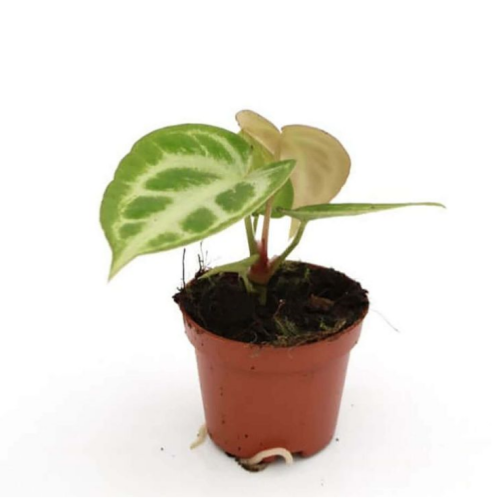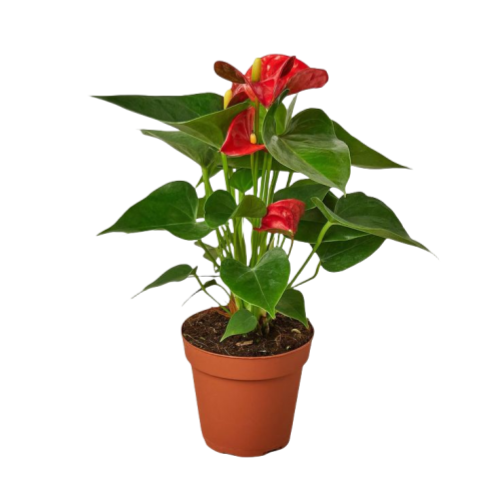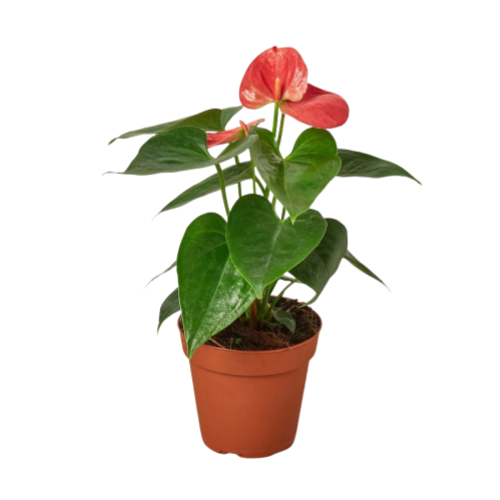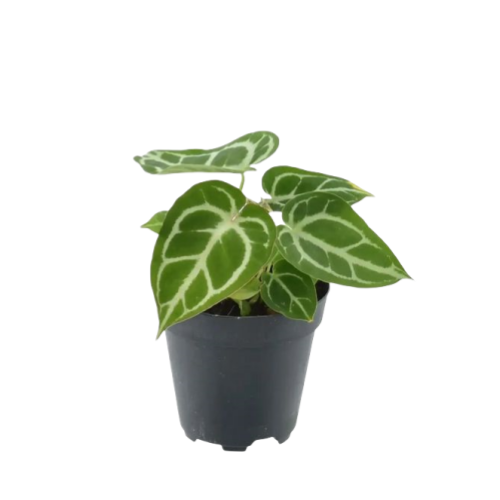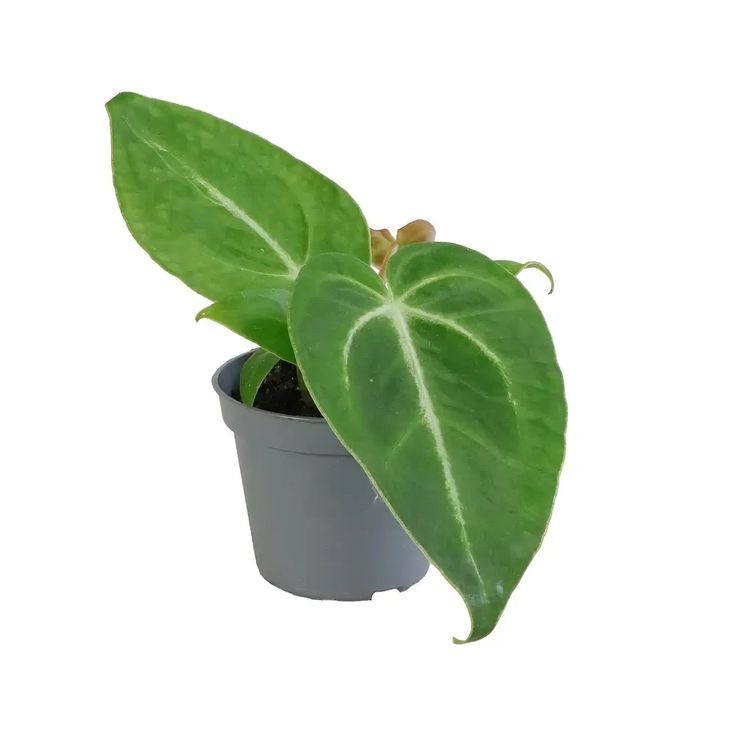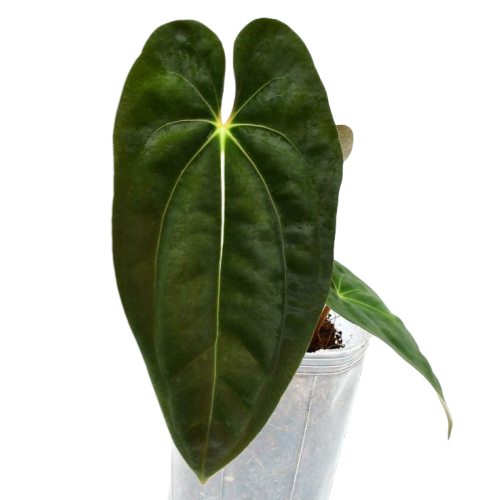Anthrium superbum
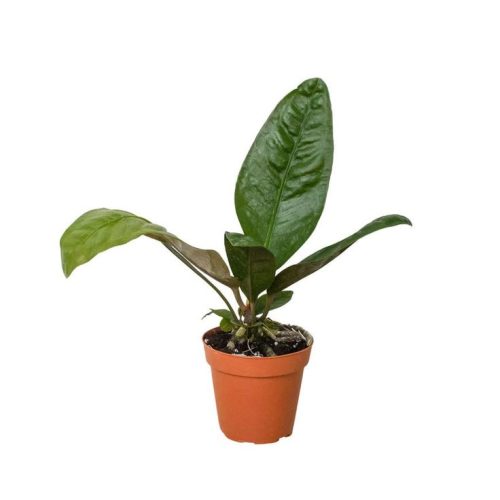
- Botanical Name: Anthurium Superbum Madison
- Family Name: Alaralae
- Zimayambira: 3-5 inches
- Kutentha: 18℃-24℃
- Other: warmth, indirect light, and humidity
Kulemeletsa
Mafotokozedwe Akatundu
Mizu yama nkhalango: Momwe anthrium superbum adapeza mawonekedwe ake
Ecuadorian Etchant: Zoyambira Za Anthorium Wapamwamba
Anthrium superbum, also known as the Bird’s Nest Anthurium, claims the misty lowland forests of Ecuador as its native home. This tropical fern ally flourishes at moderate elevations, typically between 650 to 1,150 feet (200 to 350 meters), where the air is thick with moisture and the undergrowth is lush with life. In these forests, the Anthurium Superbum has evolved to become a master of aerial living, an epiphyte that dances gracefully among the branches.
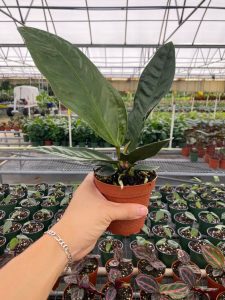
Anthrium superbum
Monga epiphyte, anthrium superbum ali ndi chikhalidwe chosasintha. Ikuchotsa makungwa a mitengo ina, pogwiritsa ntchito mizu yake yopanda mpweya kuti musachedwe m'nthaka koma mpaka kufika kumapazi ndi nthambi za anthu oyandikana nawo. Mizu iyi, nthawi zambiri pinki komanso yolimba, imakhala ndi mwayi wotha kuyamwa michere osati kuchokera kwa anthu owonongeka owazungulira komanso mwachindunji kuchokera mlengalenga.
The plant’s unique ability to grow without soil makes it a botanical wonder, showcasing nature’s ingenuity in the diverse ways plants can thrive. In its natural habitat, Anthurium Superbum’s rosette of stiff, leathery leaves forms a bowl-like structure that collects rainwater and debris. This natural basin not only provides a reservoir for the plant during the dry spells but also creates a miniature ecosystem that supports a variety of forest critters.
The Anthurium Superbum’s adaptation to its forest ecosystem is a testament to its resilience and versatility. It stands as a silent sentinel in the Ecuadorian lowlands, its leaves reaching out to form a protective nest that invites life to flourish within its embrace. This plant is not just a passive observer in its environment but an active participant, shaping its own survival story in the eternal ballet of the rainforest.
Leafy labyrinth: Magawo a Quirky a bwenzi lathu
This plant is known for its long, stiff leaves that fan out to form a bowl shape, resembling a bird’s nest, hence its nickname. The leaves are elliptical to oblong-elliptic, with a dark purple-green color on the front and occasionally purple or red on the back. The plant’s inflorescence is erect and shorter than the leaf, with a white spadix that turns rose, and a green spathe. It bears purple berries。
Chinyezi cha chinyezi kapena chodikira: Komwe mbewu iyi imayitanitsa kunyumba
Anthrium Superbum imawoneka bwino komanso kutentha kwambiri. Imakonda kuwala kowoneka bwino koma kumatha kulekerera kupuma kotsika. Chomera sichimangokhala chinyezi ndipo amatha kuthana ndi chinyezi chanyumba chanyumba, ngakhale timayamikila chinyezi chambiri chomwe chingalimbikitse masamba akuluakulu.
Nsanje yobiriwira: The Anthurium Superbum’s Secret Celebrity Status
Ecuadorian Etchant: Zoyambira Za Anthorium Wapamwamba
Anthurium Superbum, also known as the Bird’s Nest Anthurium, claims the misty lowland forests of Ecuador as its native home. This tropical fern ally flourishes at moderate elevations, typically between 650 to 1,150 feet (200 to 350 meters), where the air is thick with moisture and the undergrowth is lush with life. In these forests, the Anthurium Superbum has evolved to become a master of aerial living, an epiphyte that dances gracefully among the branches.
Monga epiphyte, anthrium superbum ali ndi chikhalidwe chosasintha. Ikuchotsa makungwa a mitengo ina, pogwiritsa ntchito mizu yake yopanda mpweya kuti musachedwe m'nthaka koma mpaka kufika kumapazi ndi nthambi za anthu oyandikana nawo. Mizu iyi, nthawi zambiri pinki komanso yolimba, imakhala ndi mwayi wotha kuyamwa michere osati kuchokera kwa anthu owonongeka owazungulira komanso mwachindunji kuchokera mlengalenga.
The plant’s unique ability to grow without soil makes it a botanical wonder, showcasing nature’s ingenuity in the diverse ways plants can thrive. In its natural habitat, Anthurium Superbum’s rosette of stiff, leathery leaves forms a bowl-like structure that collects rainwater and debris. This natural basin not only provides a reservoir for the plant during the dry spells but also creates a miniature ecosystem that supports a variety of forest critters.
The Anthurium Superbum’s adaptation to its forest ecosystem is a testament to its resilience and versatility. It stands as a silent sentinel in the Ecuadorian lowlands, its leaves reaching out to form a protective nest that invites life to flourish within its embrace. This plant is not just a passive observer in its environment but an active participant, shaping its own survival story in the eternal ballet of the rainforest.
Zenera chodabwitsa kapena kusamba buddy: Malo abwino kwambiri pazomera zanu zatsopano pal
Chomera ichi ndi choyenera makonda apakati, makamaka pafupi ndi Windows kapena kum'mawa-kuyang'ana kwambiri momwe ungalandirire kuwala kosamveka. Itha kuyikidwanso m'mabafa kapena malo ena a nyumba. Kunja konse, zitha kubzala ku Hardi Hardiensie Luener 10a ndi 11, monganso akutetezedwa ku dzuwa ndi kuwonda.
Ndalira ludzu? Osati kwenikweni: The Lazy Gardener’s Guide to Watering Wisdom
One of the unique aspects of Anthurium Superbum is its ability to tolerate lower humidity and less frequent watering due to its thick leaves and robust roots. It also has a slow growth rate, which makes it a low-maintenance addition to any garden. The plant’s air-purifying properties and its tolerance to a range of conditions make it an excellent choice for those seeking a hardy, visually impressive houseplant。





